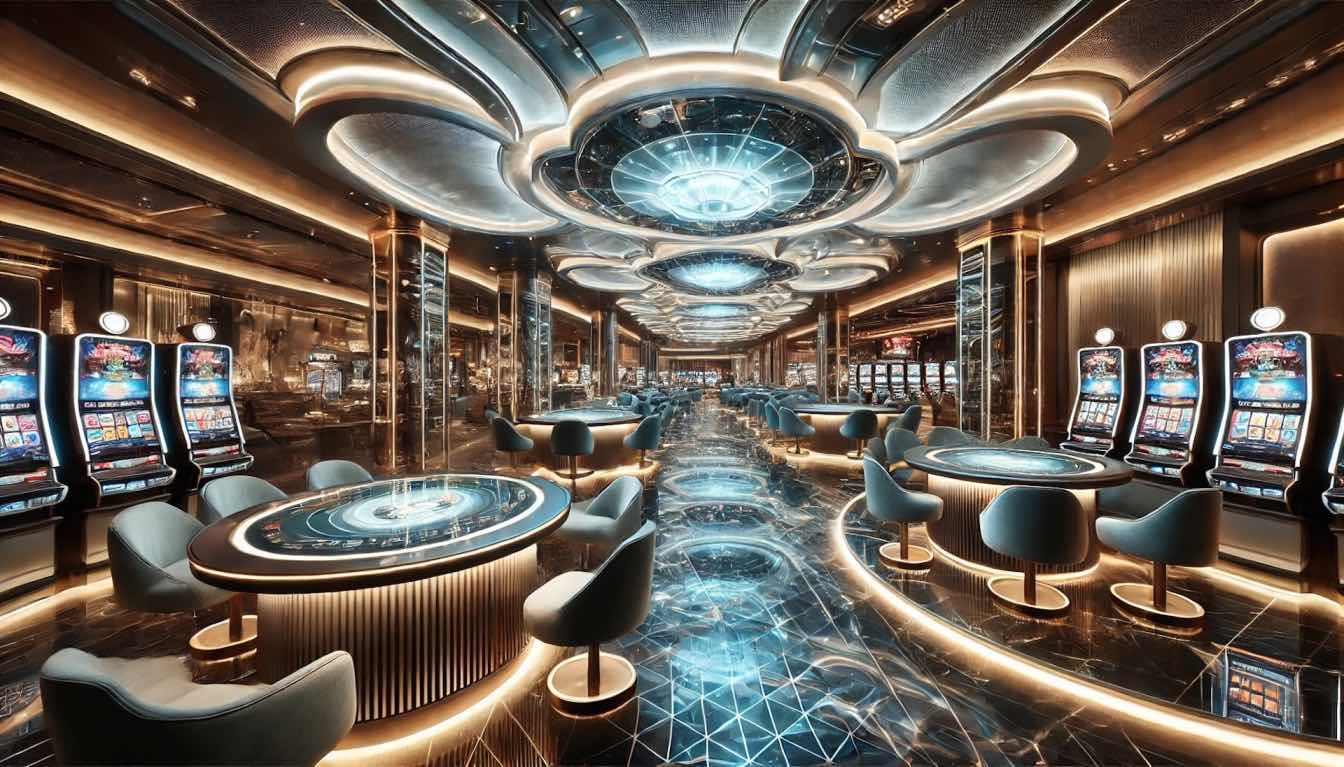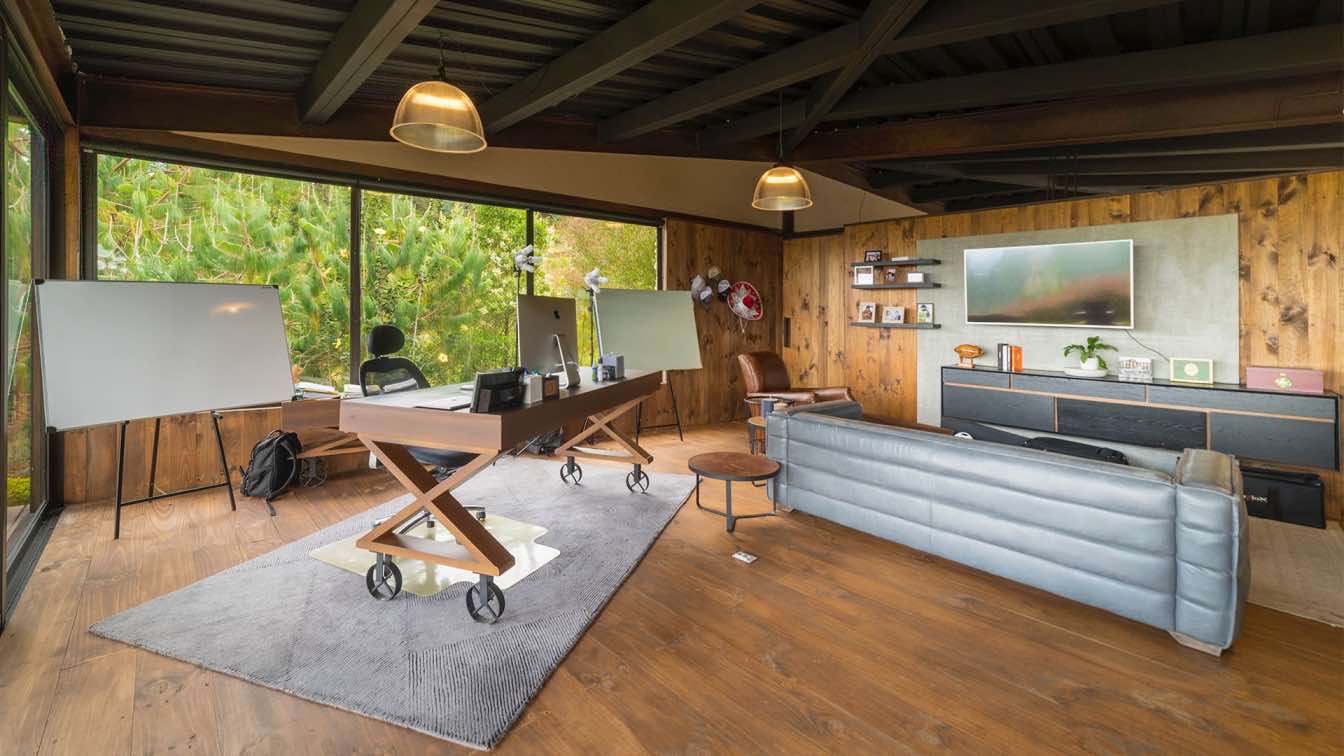Casino interiors are designed to keep visitors entertained, comfortable, and engaged for as long as possible. Every element, from the layout of the floor to the positioning of slot machines, plays a role in maximising a casino's profitability.
This approach combines psychology, architecture, and strategic planning, creating environments that encourage visitors to stay and play longer.
Slot Machine Design
Slot machines are some of the most noticeable and popular features in nongamstopcasinos.net. Their design focuses on attracting attention and encouraging play. Bright colours, flashing lights, and loud sounds make slot machines hard to ignore.
These machines are often placed in prominent positions, such as near entrances or along walls, to be easily seen by everyone entering the casino.
Placement and House Edge
The strategic placement of slot machines is no accident. Casinos want players to spend more time on slots because they typically have a higher house edge than table games. This means that, over time, the casino earns more money from these games. To achieve this, slot machines are positioned to catch the eye, using sensory stimulation to draw players in.
Easy Access and Comfort
Slots are also designed for comfort. Chairs are cushioned and ergonomic, making it easy for players to remain seated for extended periods.
The machines themselves are user-friendly, with clear instructions and simple buttons, allowing even inexperienced players to enjoy them without much difficulty.
The Windowless Environment
Many casinos are built without windows, a feature that serves a distinct purpose. Natural light and outside views are limited to create a controlled environment where players lose track of time.
This technique helps to encourage longer gaming sessions, as it disrupts the body's natural circadian rhythm, making it harder for players to sense how much time has passed.
No Clocks, No Time
Alongside the absence of windows, clocks are also missing from most casino interiors. This further enhances the sense of timelessness, creating a world where time stands still.
Although players can check their phones or watches, the lack of obvious time indicators subtly encourages them to remain in the gaming area.
Labyrinthine Layouts
The design of a casino often resembles a maze, guiding players through a carefully constructed path filled with opportunities to play.
Exits are not prominently marked, and the layout can be confusing, especially to newcomers. This deliberate confusion is intended to keep players inside, allowing more opportunities for gaming.
Signage and Navigation
While fire exits must be signposted by law, other exits are usually less obvious. Players wishing to leave may navigate past more gaming tables and slot machines, further tempted to play another round.
However, staff members are trained to provide friendly assistance, ensuring guests do not feel entirely lost or frustrated.
Familiarity for Regulars
For regular visitors, these layouts quickly become familiar. They learn the best routes to find their favourite games, restaurants, or facilities, reducing frustration and increasing comfort. This familiarity encourages repeat visits, reinforcing the casino's goal of long-term customer loyalty.
Displays of Wealth and Opulence
Casino interiors often exude luxury. High ceilings, sparkling chandeliers, plush carpets, and elegant furniture create a sense of grandeur.
This atmosphere is designed to make players feel like they are in a high-class environment, enhancing their overall experience.
Creating a Comfortable Atmosphere
The decor, combined with comfortable seating and strategic lighting, helps create an inviting space where players feel relaxed.
Additionally, casinos are equipped with amenities such as bars, restaurants, and ATMs, all within easy reach. This ensures that players have everything they need close by, further encouraging them to stay.
A Sense of Exclusivity
Casinos also cater to different types of players. For those willing to spend large sums of money, exclusive VIP areas are available. These sections offer privacy, higher betting limits, and more attentive service, creating a unique experience for high rollers.
VIP Areas and High Rollers
VIP areas are specially designed spaces for the most valuable players. These sections provide a more exclusive atmosphere with luxurious decor, private gaming tables, and machines with higher betting limits.
Often separated by ropes or partitions, these areas ensure that high rollers can enjoy their games away from the general crowd.
Enhanced Customer Service
Staff in VIP areas are trained to provide more attentive service, ensuring that high rollers have everything they need. This includes personalised offers, faster drink service, and more comfortable seating. The goal is to make these players feel valued and appreciated, encouraging them to stay longer and spend more money.
Privacy and Security
Privacy is also a priority in these areas. The use of mobile phones is often restricted to protect the privacy of all guests. This added security layer helps create a more comfortable and secure environment for those spending significant amounts of money.
Psychological Triggers in Casino Design
Casinos rely on various psychological triggers to influence player behaviour. These include visual stimuli, such as bright lights and bold colours, auditory cues like music and sounds, and tactile elements like soft carpets and comfortable seating.
Music and Sound Effects
The choice of background music in a casino is carefully considered. Upbeat, fast-paced music encourages faster betting, while softer, more relaxing tunes help to create a calm atmosphere. Sound effects from slot machines, such as bells and chimes, create a sense of excitement and anticipation, keeping players engaged.
Colour Schemes and Lighting
Colours and lighting also play a crucial role in creating the right atmosphere. Warm colours like red and gold are often used to create a sense of comfort and excitement. Soft lighting is used to make the space feel more intimate and welcoming, while brighter lights highlight key areas such as bars, slot machines, or gaming tables.
Key Elements of Casino Design
|
Element |
Purpose |
Example |
|
Slot Machine Placement |
Attract attention, increase playtime |
Positioned at entrances, flashing lights and sounds |
|
Windowless Environment |
Disrupt time awareness |
No windows or clocks |
|
Labyrinthine Layout |
Keep players inside, encourage further play |
Confusing pathways, hidden exits |
|
Displays of Opulence |
Create a sense of luxury, attract high-spending players |
High ceilings, chandeliers, luxurious seating |
|
VIP Areas |
Cater to high rollers, encourage big spending |
Private sections, higher betting limits, personalised service |
FAQ
Why do casinos have no windows?
Casinos lack windows to prevent players from seeing the passage of time, encouraging them to stay longer.
Why are slot machines placed near the entrance?
Slot machines are placed near entrances to attract attention immediately, using bright lights and sound to draw players in.
What is the purpose of VIP areas in casinos?
VIP areas offer exclusive services, higher betting limits, and a private environment for high rollers to encourage them to spend more.
Why do casinos have confusing layouts?
Casinos use maze-like layouts to make it difficult for players to leave, increasing the chances of more play.
How do colours and lighting affect casino design?
Colours and lighting create a comfortable and exciting atmosphere, influencing mood and encouraging longer play sessions.
Why are clocks not displayed in casinos?
Clocks are excluded to help players lose track of time, promoting longer gaming sessions.





